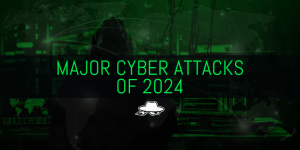The Differences Between Reactive and Preventive SOC Teams in Threat Hunting

Reading Time: 3 Minutes
Introduction
In today’s cybersecurity landscape, organizations face an increasing number of cyberattacks, making it essential for Information Security teams to be highly prepared to identify, mitigate, and respond to these threats. One of the key components of these defense strategies is the Security Operations Center (SOC), a team dedicated to continuous 24/7 monitoring and incident response. However, the way these teams operate can vary, being categorized as either reactive or preventive in their threat-hunting approach.
This article explores the differences between a reactive and preventive SOC team and highlights the importance of Threat Intelligence as a fundamental layer of proactive protection.
Differences Between Reactive SOC and Preventive SOC
Reactive SOC:
A reactive SOC is often characterized by a more static approach, relying heavily on automated alerts provided by security systems such as firewalls, intrusion prevention systems (IPS/IDS), antivirus, EDRs, XDRs, or SIEMs. The activities of this team tend to focus on responding to incidents that have already occurred, or are currently occurring, rather than identifying potential threats before they are triggered. Key characteristics of a reactive SOC team include:
- Constant but reactive monitoring: They wait for alerts to be generated before initiating analysis and incident response.
- Dependence on automated security technology: The reactive team heavily relies on security tools that can automatically detect anomalies and generate alarms.
- Lower focus on threat hunting: The team typically does not engage in active hunting for potential threats, preferring to respond to those that have already manifested. The security team monitors systems, analyzes logs, and responds to alerts when triggered by security tools.
While this approach may be effective in some cases, it has significant limitations. A reactive SOC may fail to detect advanced threats, such as zero-day attacks or insider threats, which may operate without triggering traditional alarms. Reactive teams are typically responding to threats after they have already affected the system.
Preventive SOC:
In contrast, a preventive SOC operates at a more advanced level than a reactive SOC. A preventive SOC, supported by a Threat Intelligence team, may have automated processes but also employs a trained team to respond proactively to a threat that may be about to occur. This type of SOC anticipates attacks by identifying indicators of compromise (IOCs) and other important information provided by threat intelligence sources. Its actions are not limited to incident containment but involve analyzing events and trends to mitigate future damage while implementing consistent information to prevent future attacks. Key characteristics include:
- Rapid and coordinated responses to incidents: When a threat is detected, the preventive SOC immediately takes action, applying containment, mitigation, and recovery measures.
- Event correlation tools: Security Information and Event Management (SIEM) systems, CTI, and other sophisticated tools are used to aggregate data from multiple sources and correlate it with statistics, using threat intelligence to search for future signs of intrusion.
- Ability to learn from past incidents: After each incident, the preventive SOC improves its capabilities based on lessons learned.
However, even a preventive SOC may still lag behind attackers, responding only after identifying an attack, which may not be sufficient in scenarios involving advanced persistent threats (APTs).
See Also: So you want to be a hacker?
Offensive Security and Ethical Hacking Course
Direct Comparison:
| Characteristic | Reactive SOC | Preventive SOC |
| Approach | Responds after detection | Acts before occurrence, preventing attacks |
| Focus | Incident mitigation | Incident prevention |
| Operational phase | During or after an incident | Before an incident |
| Tool usage | Automated detection systems | Detection systems, behavioral analysis, Threat Intelligence |
| Behavioral analysis | Rarely applied | Actively applied |
| Threat hunting | Rare | Frequent and proactive |
| Threat intelligence | Limited, usually uses static rules | Intensively used |
| Anticipation capability | Low | High |
| Tool examples | SIEM, IPS/IDS | SIEM, EDR, Behavioral Analysis, Threat Intelligence |
Should We Separate the Reactive and Preventive SOC?
Both fields are crucial for threat hunting and prevention. Separating the teams between reactive and preventive roles may bring benefits in terms of specialization and focus on different phases of cyber defense, but it can also pose challenges. It is rare to completely separate the teams, as each has its specific responsibilities and goals. The decision to separate or integrate these teams depends on several factors, such as the size of the organization, the complexity of the infrastructure, available resources, and the maturity level of the security team. Below, we discuss the pros and cons of this separation and the best practices to consider:
Advantages of Separation
- Allows each team to focus on their specific responsibilities, without overlap.
- Improves the effectiveness of information security, as each team can concentrate on their tasks.
- Enables a preventive SOC team to focus on developing strategies to prevent threats, while a reactive SOC team focuses on incident response activities.
- With separate teams, each group can dedicate its full attention to specific tasks without distractions, potentially leading to better time and resource management.
Challenges of Separation
- Requires a more complex organizational structure, with two teams.
- Demands effective communication between the two teams to ensure information is shared, and strategies are aligned.
- May require more resources, as each team will need specific tools and training.
- Separation may hinder the integration of data and holistic threat visibility, as teams may be focused on different aspects of security.
Conclusion
Both reactive and preventive SOCs play important roles in defending against cyber threats, but the future of cybersecurity depends on a more proactive and integrated approach. Companies should aim to strengthen their teams with the ability to engage in threat hunting and effectively utilize Threat Intelligence. A SOC team with these capabilities can not only react quickly to incidents but also anticipate and prevent attacks, better protecting the organization’s critical assets. The choice between a reactive or preventive approach depends on the organization’s specific needs, available resources, and level of cybersecurity maturity. However, the current trend is toward adopting a more preventive posture as cyber threats become more sophisticated and frequent.
When it comes to separating or integrating the SOC teams, the most important factor is ensuring efficient communication and the use of Threat Intelligence to feed both prevention and response efforts. Collaboration between reactive and preventive functions is key to a complete and proactive security posture.
This article is written by Geovane da Costa Oliveira
References:
⦿ Stallings, William. *Cryptography and Network Security: Principles and Practice*. Pearson Education, 2020.
⦿ Stiawan, Deris, et al. “Advanced persistent threat mitigation:
Techniques, tools, and challenges.” *Journal of Network and Computer Applications* 144 (2019): 50-69.
⦿ Mandiant. *M-Trends 2023: Threat Landscape, Attack Trends, and Key Insights from Incident Response*. FireEye, 2023.
⦿ MITRE Corporation. “Adversarial Tactics, Techniques, and Common Knowledge (ATT&CK).”
Available at: [https://attack.mitre.org/](https://attack.mitre.org/). Accessed in 2024.
⦿ Trend Micro. *The Role of Threat Intelligence in SOC Operations*.
Available at: [https://www.trendmicro.com/](https://www.trendmicro.com/). Accessed in 2024.
Are u a security researcher? Or a company that writes articles about Cyber Security, Offensive Security (related to Information Security in general) that match with our specific audience and is worth sharing? If you want to express your idea in an article contact us here for a quote: [email protected]


















